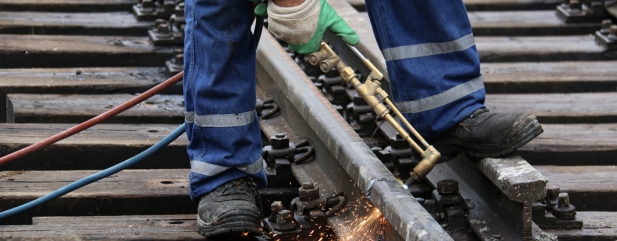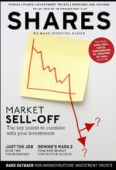Archived article
Please note that tax, investment, pension and ISA rules can change and the information and any views contained in this article may now be inaccurate.
Rare setback for many infrastructure trusts

The once reliable infrastructure investment trust space has come under enormous pressure as investors panic over the collapse of Carillion (CLLN). There are very real fears that Carillion going to the wall could be the first in series of outsourcing failures.
A big profit warning at Capita (CPI) has not helped to calm those fears in the interim.
The Carillion episode has also sparked intense political debate about whether so-called Private Finance Initiative (PFI) contracts and the whole Public Private Partnership (PPP) funding scheme is fit for purpose.
Investors may well wonder if there is further fall-out to come, or conversely, whether there is now good value to be had in this typically reliable end of the investment spectrum.
CARILLION COLLAPSE
The past six months has been remarkably bumpy for the sector. There has been talk for several months about PFI contracts being taken in-house (placed under government control) under a Labour party government, prompted by comments from shadow chancellor John McDonnell last year.
Carillion’s collapse has handed extra fuel to the anti-PFI clamour.
This has sparked notable share price declines for leading infrastructure trusts, including a near 10% at HICL Infrastructure Company (HICL) in January alone, after confirming a likely £50m hit to net asset value (NAV) as a result of Carillion’s demise.
According to data from Numis Securities, 14% of HICL’s portfolio is exposed to assets that had been managed by Carillion.
Valued at £2.6bn, HICL is one of the UK’s largest infrastructure investment trusts, and while outsiders may deem this sort of share price decline modest, such sharp devaluations are rare in this niche part of the investment trust universe.
The John Laing Infrastructure Fund (JLIF) and the International Public Partnership (INPP) trust have also endured notable falls in their share price over the past six months or so. Like HICL, both are exposed to Carillion via it running various assets within their portfolios; 8.5% for JLIF, 3% for INPP.
INFRASTRUCTURE TRUSTS EXPLAINED
This sector involves long-term investment (20 or 30 years is not untypical) in core services and facilities, such as motorways, energy projects and water treatment works. Highly regulated industries form the backbone, an area that consultancy KPMG categorises into five main sectors spanning aviation, electricity and gas, rail, telecoms and water/wastewater, encompassing a wide range of assets.
KPMG’S REGULATED ASSET WATCHLIST
Long-economic lives often with strong inflation linkage
Essential, often monopolistic assets
Financed with investment grade credit
Returns based on efficiently invested capital/cost recovery
These projects often enjoy a large degree of government backing, which helps support returns that are typically less volatile than those from the wider stock market, or other investment trust areas.
In theory, spending on infrastructure is likely to increase too, as monetary policy grows tired and governments look to other stimulus options.
This means that infrastructure investment trusts can be an efficient and well-managed way for investors to access infrastructure assets and the long-run cash flows that this implies.
RECOVERY OR FURTHER DECLINES?
As the research team at market marker Winterflood Securities points out, ‘investors have not been accustomed to such drama from the infrastructure sector and it has served to intensify the political pressure on the PFI model.’
This comes as a shock to a sector where share price premiums to net asset value have been commonplace for some time, reflecting the high value ascribed to long-term, inflation-linked, government-backed income sources.
‘Events of the last four months mean that a reappraisal of the asset class is required,’ says the research team at Winterflood.
REGAINING CONTROL
Confidence may take time to return. The ‘perception of political risk is likely to continue to weigh on share prices across the sector, particularly for those with large exposure to the more sensitive UK PFI subsectors,’ believe analysts at Numis Securities.
Perhaps the best way for infrastructure investment trust managers to restore confidence is to provide continual reassurance over the robustness of contractual revenue streams.
Importantly for investors there has been no hint that investment trusts in the infrastructure space may have to rethink their dividend policies, even in the face of the Carillion fiasco.
For the sector experts at both Numis and Winterflood there are still attractive investment propositions within the infrastructure trust space. 3i Infrastructure (3IN) is one of the strongest convictions for both research teams, while they also share a positive view on HICL.
Winterflood also believes there is value to be had from the Greencoat UK Wind (UKW) investment trust, which ploughs money into large windfarm projects. (SF)
Important information:
These articles are provided by Shares magazine which is published by AJ Bell Media, a part of AJ Bell. Shares is not written by AJ Bell.
Shares is provided for your general information and use and is not a personal recommendation to invest. It is not intended to be relied upon by you in making or not making any investment decisions. The investments referred to in these articles will not be suitable for all investors. If in doubt please seek appropriate independent financial advice.
Investors acting on the information in these articles do so at their own risk and AJ Bell Media and its staff do not accept liability for losses suffered by investors as a result of their investment decisions.
Issue contents
Big News
- BP wins the battle of the oil majors
- Shoppers keep calm and carry on
- Four important stories from the past week: Capita, Purplebricks, BT and Vodafone
- Ocado story sours again
- Tesco impresses with profit and dividend guidance
- Weighing up the impact of the market sell-off
- Why Royal Mail’s pension breakthrough is such a big share price catalyst

 magazine
magazine









